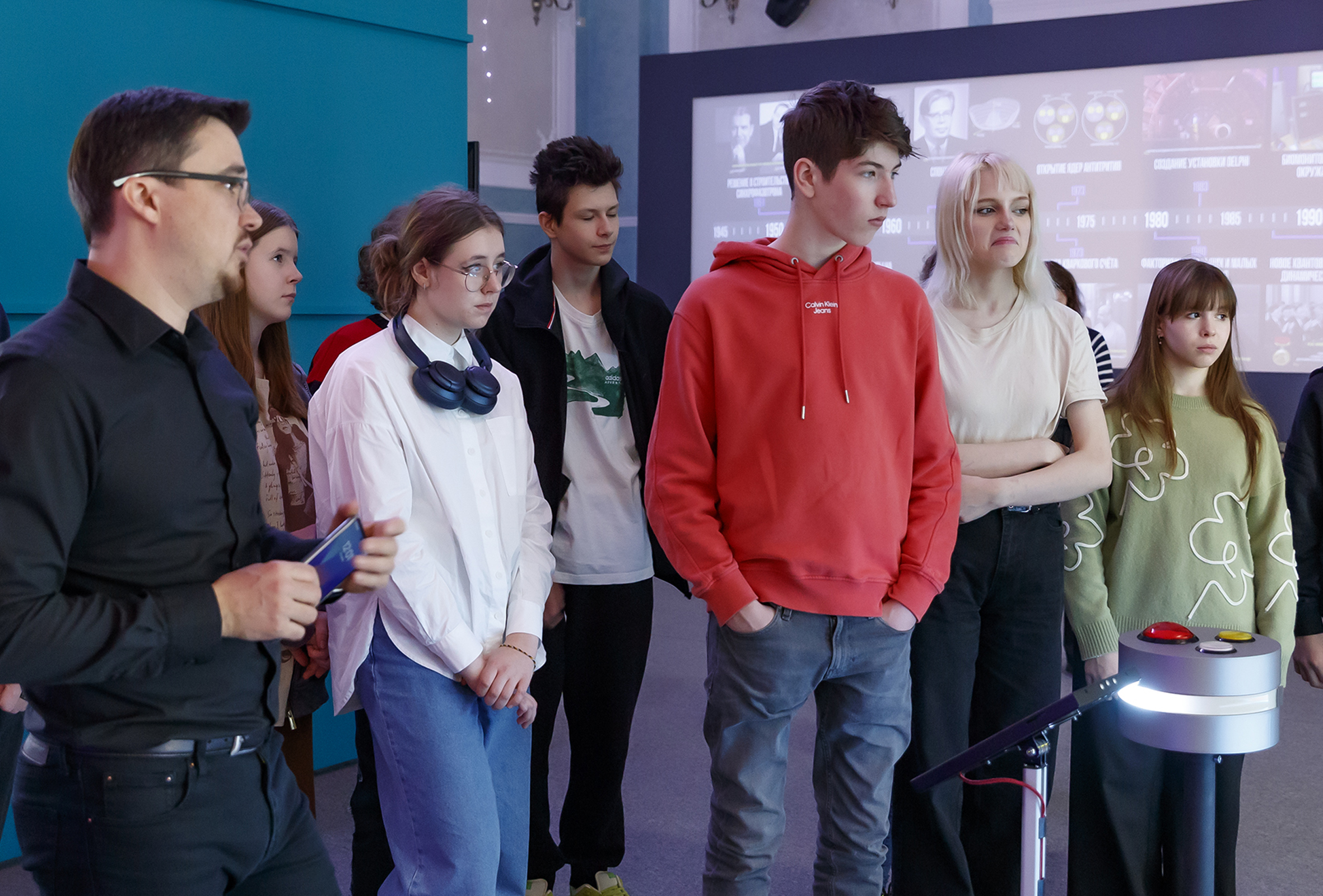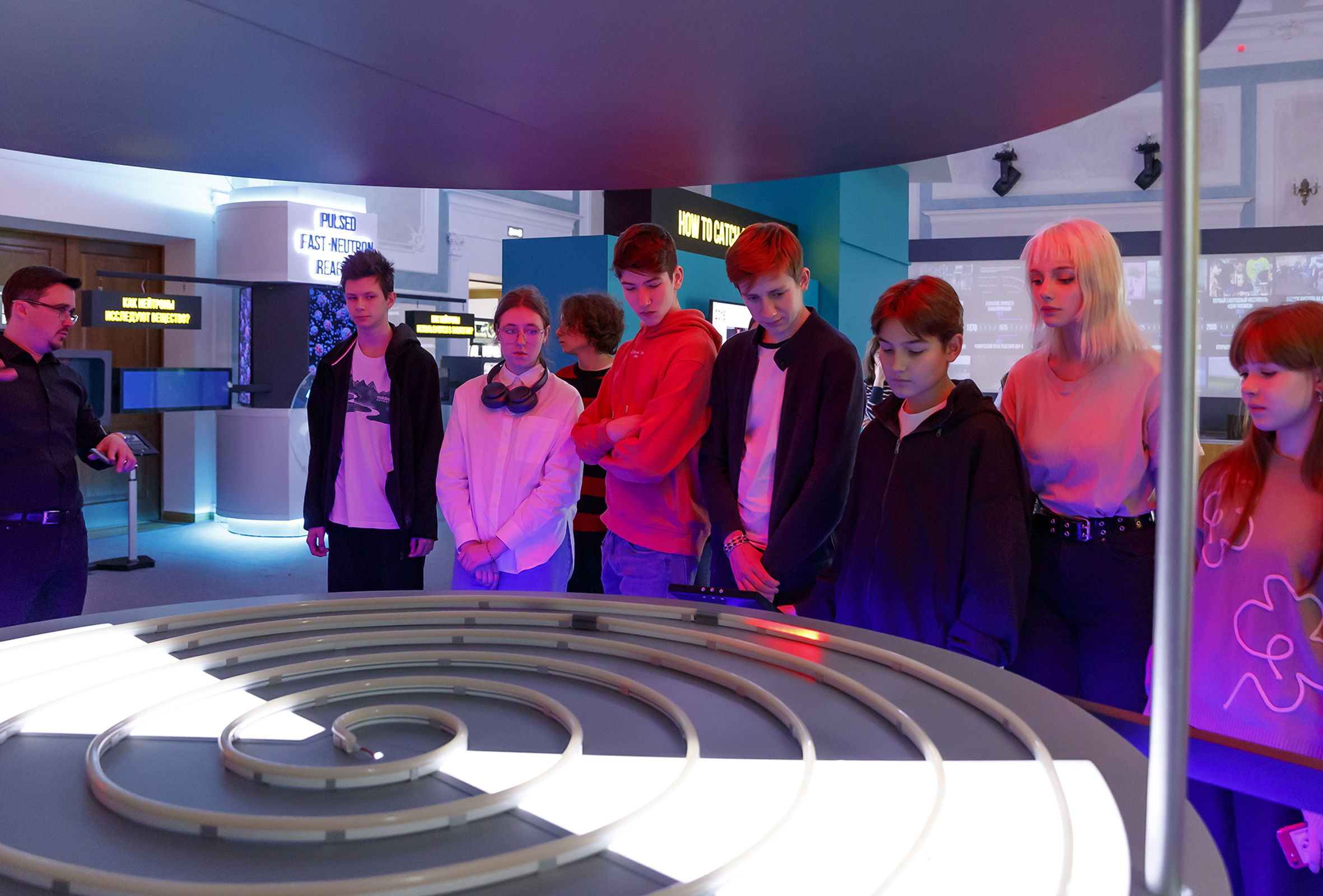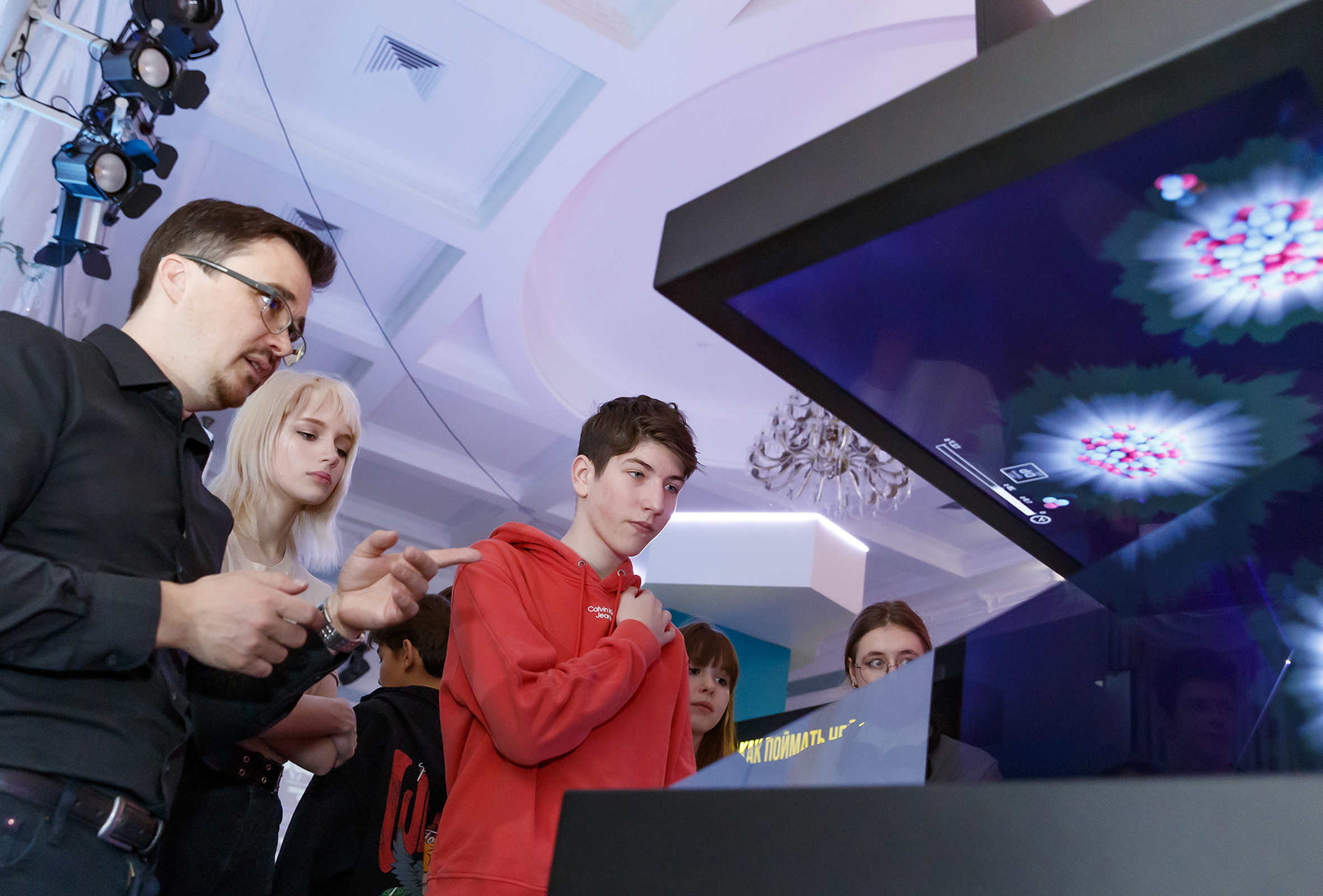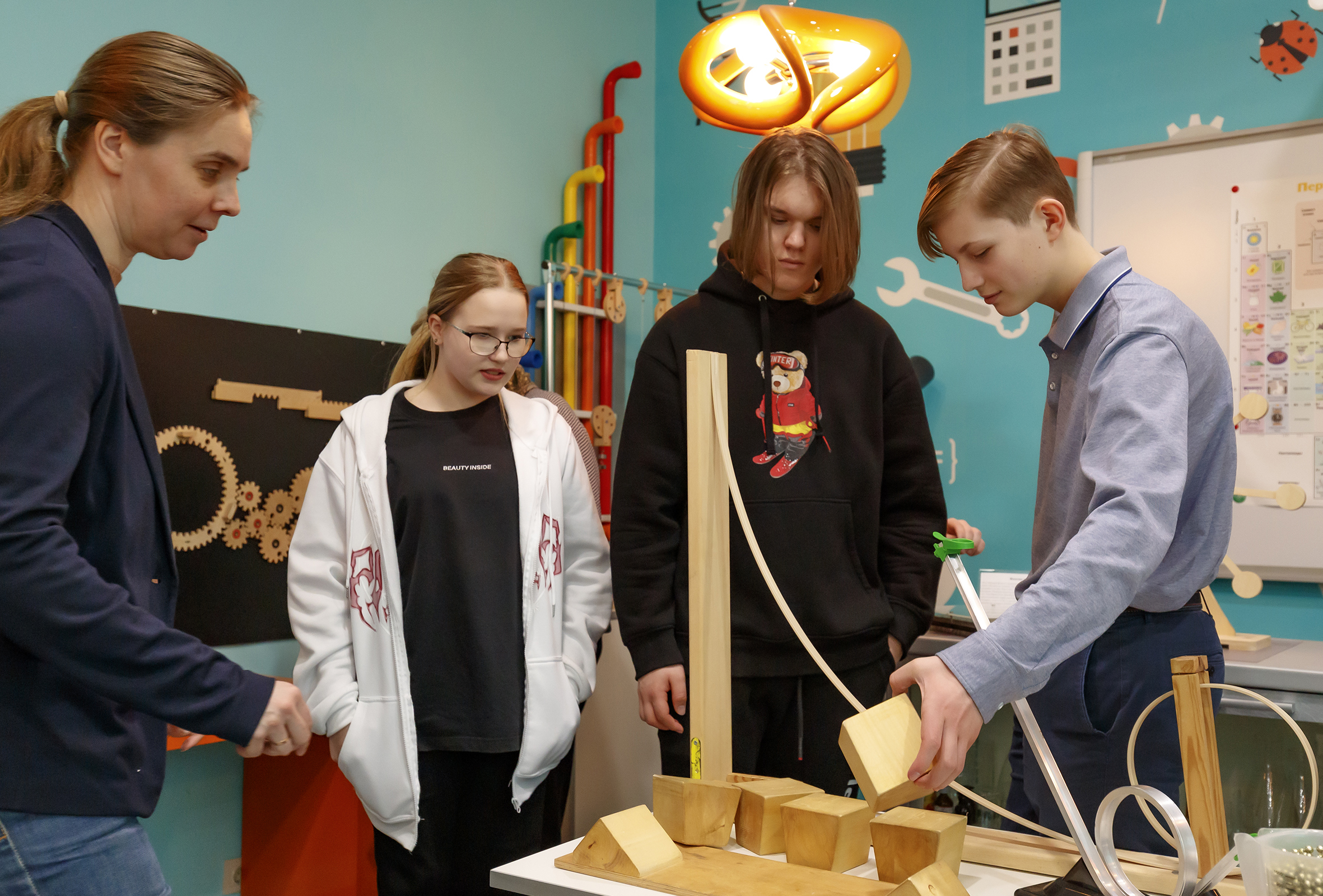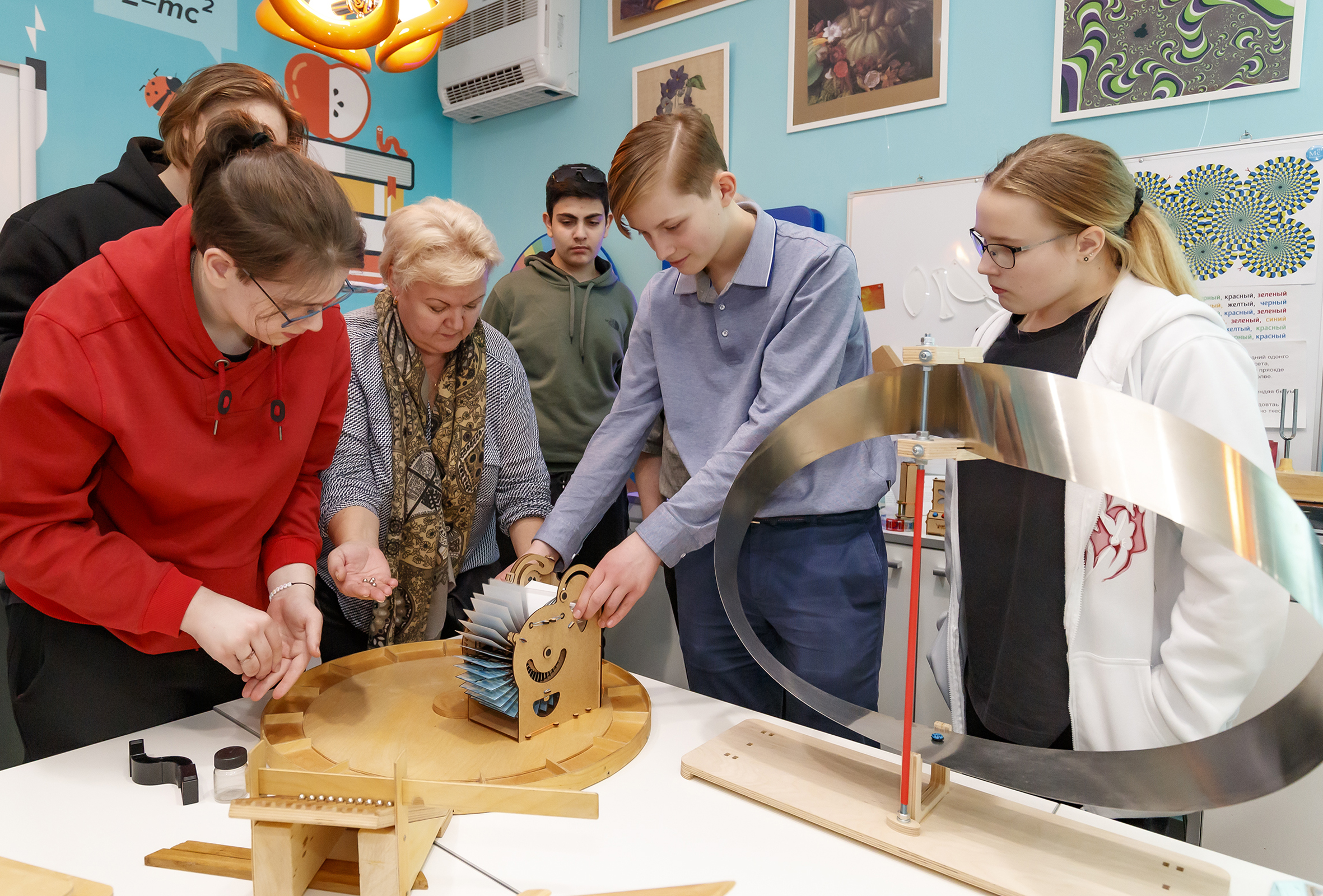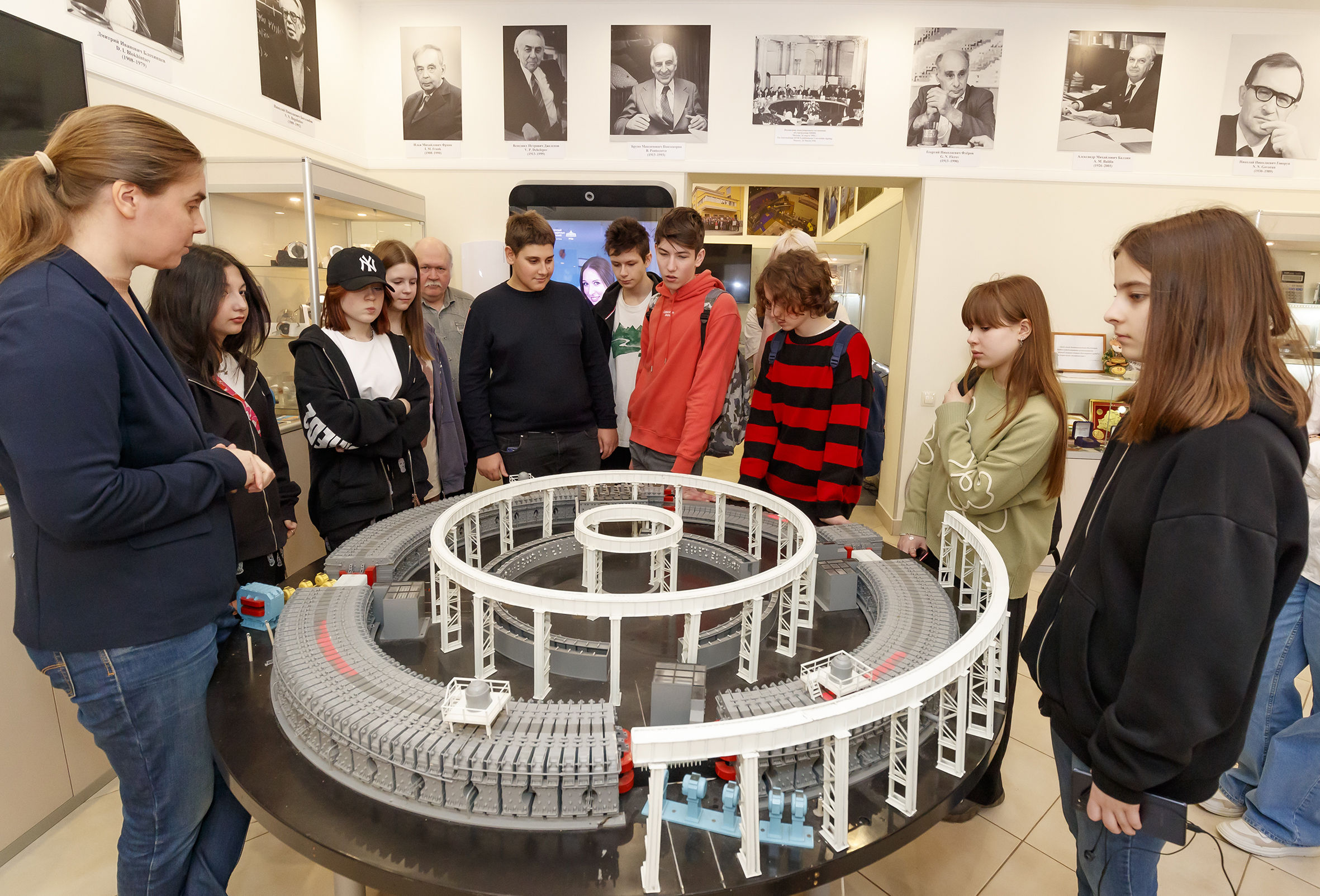Second landing of young scientific tourists in Dubna
Media, 06 April 2023
On 6 April, an excursion was held in Dubna as part of the implementation of the Decade of Science and Technology initiative “Popular Science Tourism”. 29 schoolchildren of 8–10 grades from Moscow came to the science city to get acquainted with the Joint Institute, its scientific facilities and research, learn more about nuclear physics. The first excursion to Dubna of the kind was held in February 2023. From now on, it is planned to hold them every two weeks.
“The Joint Institute strives to convey the value of fundamental research to the widest possible audience. To do it, JINR uses the most advanced tools of scientific popularisation, from interactive exhibitions to virtual tours of facilities. Schoolchildren and their teachers are the main audience of our popularisation initiatives. They are our main guides. The level of intelligence of future generations and scientific and technological development depend on them,” JINR Director Grigory Trubnikov commented on the event.
Participants of the excursion visited the Museum of History of Science and Technology of JINR. There they got acquainted with the history of the international scientific centre in Dubna and new scientific projects implemented at JINR. Children saw and tried doing entertaining physical experiments themselves in the experimentarium, the Classroom Laboratory of the Museum, and tested their brains in a scientific quiz.
Schoolchildren visited the interactive exhibition “JINR Basic Facilities” at the Cultural Centre “Mir” as well. They had the opportunity to see models of JINR’s facilities in Dubna, namely the cyclotron, the collider with a particle detector, the IBR-2 Pulsed Reactor, the Baikal-GVD Deep Underwater Neutrino Telescope located in the Irkutsk Region, and others.
In addition, the excursion programme included a visit to the virtual physical laboratory of the University “Dubna” created with the assistance of JINR. Tourists took part in experiments in nuclear physics and also saw real physical and chemical experiments. For example, using liquid nitrogen experiments, scientists showed how materials change their properties at ultra-low temperatures.
The schoolchildren shared their impressions about the scientific tour. “I have really enjoyed the tour. One can see that the people working here like their job. It has been fascinating to hear about JINR’s scientific facilities and projects. The most exciting thing to learn was the research of matter using neutrons. Until now, I was going to become an engineer. But after the excursion to Dubna, I’m thinking of reconsidering my plans,” Taisiya Basilova, an 8-grade student of the Academic Gymnasium in Moscow, said. “It’s great that the exhibition is interactive and visual. The guides have explained the most difficult physical tasks in plain language. The search for new chemical elements especially impressed me,” a gymnasium student Ivan Balyuk said.
Excursions to the leading scientific centres of Russia are being organized within the initiative “Popular Science Tourism” of the Decade of Science and Technology in Russia. It is designed to increase the availability of information about achievements of Russian science and attract young people to research and developments. Participants can communicate with scientists, take part in workshops, carry out scientific experiments.
The trip to Dubna is designed for 7-11 grade schoolchildren. It includes a visit to the interactive exhibition “JINR Basic Facilities” at the JINR Cultural Centre “Mir”, a tour of the Museum of History of Science and Technology of JINR, as well as workshops, experiments, quizzes at the laboratories of physics and chemistry of the University “Dubna”. Besides, online tours of the Institute’s Laboratories are available for everyone on the edu.jinr.ru platform.

